by Carol Crotta Los Angeles Times Jan 2015
The scene in one unassuming 1920s and ’30s Los Angeles neighborhood is increasingly familiar. Simultaneously springing up within two blocks, on modest 6,500-square-foot lots that once held single-story homes of less than 2,000 square feet, are four massive two-story constructions of 5,000 square feet each that aggressively push the limits of the lot lines — classic mansionization. It’s not just a wealthy neighborhood phenomenon. Throughout the city, homeowners are choosing to add on, build up and build out.
While much has been written about the issues these large structures pose to privacy, light, airflow and community, one casualty hasn’t received as much attention. These rebuilt lots frequently have only the slimmest of backyards. This new formula of giant house-tiny yard turns on its head the seminal Southern California middle-class dream: a decent, but not extravagant, house with a comfortable yard for the family to play in. Increasingly, the choice is larger interior private space at the expense of outdoor private space. In a city coveted for its near-perfect climate, the question is: Why?
Homeowners at a certain income level expect more from their houses than in the past — a fact readily apparent to the real estate business. “It’s a different breed of people here today,” says Realtor Ron Wynn, who has worked on the Westside for more than 30 years. “There are a lot of young people used to earning a lot of money and used to being very comfortable.”
“Comfortable” translates to a desire for bigger spaces, more amenities and higher-quality materials than in the past, notes John Closson, vice president and regional manager of Berkshire Hathaway Home Services.
Lifestyle changes
In many cases, the yard is not the family center it used to be, says architect Hsinming Fung, director of academic affairs at the Southern California Institute of Architecture. “What a family would do together for entertainment value is no longer in the backyard or the frontyard,” Fung says. “Technology has completely changed the way we use space. They need the indoor space because they use it much more.”
Multiple entertainment centers and sophisticated home offices are now vital to home life, Closson points out. “When we grew up, we had a den where we watched TV. Why would you need a big home office in 1960? [Today] people will sacrifice some yard space to make sure they have these core interior spaces.”
There’s another factor at work: the trend toward larger interior space to accommodate aging parents and post-college children — think suite instead of guest room.
Blame economics
A simple — some say brutal — development equation is at work today: More square footage equals greater return on investment. “Obviously, the price of land continues to climb in Los Angeles,” architect Ron Radziner of Marmol Radziner says. “Even if the client doesn’t necessarily want a bigger house, they feel they need to have it as an investment to have it make sense.”
Architect Patrick Tighe, whose preference is to build “smart, smaller homes,” puts this common theme bluntly: “They want interior space because it gives them the greatest payback in the end.”
Builders say they are simply responding to market demand. Mario Hernandez, general foreman of Truebuild Construction and Development, developers of what he calls “McMansions,” asserts these houses “sell like hot cakes.”
Los Angeles City Councilman Paul Koretz, an L.A. native, doesn’t buy it. “This is all developer driven, in my view,” he says. “I don’t believe it is driven by preferences.”
oretz, whose 5th District covers the Westside, Miracle Mile, Hollywood and part of the San Fernando Valley, is spearheading an ordinance that will limit single-family home development to 50% of the lot’s square footage. “People still would like to have nice home with a backyard where their kids can play badminton and basketball the way I did as a kid. It’s not a bad thing to encourage kids to go outside and play in the yard.”
Yards are different
One point generally acknowledged is that many people today do not want the expense and hassle of a big yard. “It’s not practical to have a big lawn these days,” Tighe says. “People are rethinking that, rightfully so.” But they do still want something of a yard, just not the way we think of it.
For some, the talk is of “transitional space” and “blurred boundaries” — “where the yard is the house and the house is the yard,” Wynn explains. Think of open patios that flow from the interior space and include comfortable couches. A built-in kitchen and dining area with a cozy fireplace. Television and Internet access. And a gem-sized yard as part of the view.
“That backyard in a sense becomes an important room as part of the house,” says Radziner. “We can live outside if we do it right. Our clients are more interested in the quality of the space rather than the quantity of the space.”
If, indeed, Los Angeles houses, for whatever reason, are destined to overtake their yards as a matter of course, here’s one thing everyone agrees on: The key to making a successful transition to this new way of living is good design — often absent in lot-line-to-lot-line development.
They don’t care that they are sacrificing green space and light, which to me is what makes this city special,” says interior designer Helen Meisel, board president of the Los Angeles chapter of the American Society of Interior Designers. “A sensitive architect often can find a balance between space and light. But he or she must also have a receptive client
 free to visitors, said Thursday it will open its doors on Sept. 20.The $140 million museum next to Walt Disney Concert Hall will showcase the collection of billionaire philanthropist Eli Broad, who has been instrumental in transforming the once-rundown neighborhood just south of City Hall.Among the artists whose work will be displayed are Andy Warhol, Jasper Johns, Ed Ruscha, Cindy Sherman, and Roy Lichtenstein.Broad said the museum, with its free admission, is his gift to the people of Los Angeles. It will open for a one-day sneak preview on Feb. 15.
free to visitors, said Thursday it will open its doors on Sept. 20.The $140 million museum next to Walt Disney Concert Hall will showcase the collection of billionaire philanthropist Eli Broad, who has been instrumental in transforming the once-rundown neighborhood just south of City Hall.Among the artists whose work will be displayed are Andy Warhol, Jasper Johns, Ed Ruscha, Cindy Sherman, and Roy Lichtenstein.Broad said the museum, with its free admission, is his gift to the people of Los Angeles. It will open for a one-day sneak preview on Feb. 15.  Tickets for that event will cost $10.The block-long, three-story building designed by architect Elizabeth Diller features a porous, concrete veil sheathed in glass that will provide natural light and a view of some of the works from the street. Through portals, visitors also will get a glimpse of works housed in a vault.Broad, whose wealth is estimated by Forbes at $6.9 billion, made a fortune in real estate as co-founder of homebuilder Kaufman & Broad and later as founder of the investment firm SunAmerica.After selling SunAmerica for $18 billion in 1998, he turned his interests to philanthropy, focusing largely on art and education.
Tickets for that event will cost $10.The block-long, three-story building designed by architect Elizabeth Diller features a porous, concrete veil sheathed in glass that will provide natural light and a view of some of the works from the street. Through portals, visitors also will get a glimpse of works housed in a vault.Broad, whose wealth is estimated by Forbes at $6.9 billion, made a fortune in real estate as co-founder of homebuilder Kaufman & Broad and later as founder of the investment firm SunAmerica.After selling SunAmerica for $18 billion in 1998, he turned his interests to philanthropy, focusing largely on art and education.
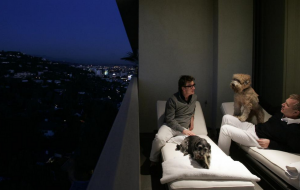


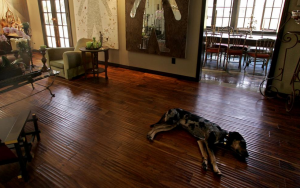
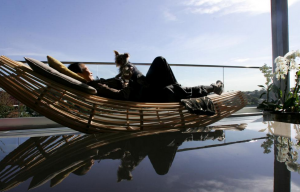
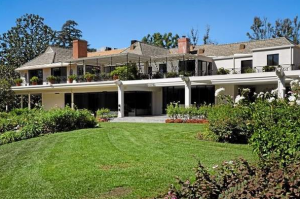
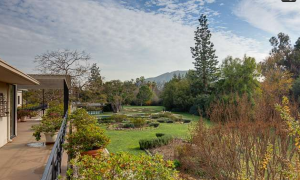 TOLUCA LAKE — The 5.2-acre Toluca Lake estate that was once home to Bob and Dolores Hope is being offered for sale, with an asking price of $23 million, the agent handling the sale announced today.
TOLUCA LAKE — The 5.2-acre Toluca Lake estate that was once home to Bob and Dolores Hope is being offered for sale, with an asking price of $23 million, the agent handling the sale announced today. The estate at 10346 Moorpark St. includes a nearly 15,000-square-foot main house that was built in 1939 and renovated in the 1950s. In addition to a large living room, the house includes a family room, bar and billiard room, formal dining room, family dining room, chef’s kitchen, library, office and staff quarters. On the second floor, there are four family bedroom suites and a master wing with a fireplace, his-and-her spa baths, closets and a study.
The estate at 10346 Moorpark St. includes a nearly 15,000-square-foot main house that was built in 1939 and renovated in the 1950s. In addition to a large living room, the house includes a family room, bar and billiard room, formal dining room, family dining room, chef’s kitchen, library, office and staff quarters. On the second floor, there are four family bedroom suites and a master wing with a fireplace, his-and-her spa baths, closets and a study.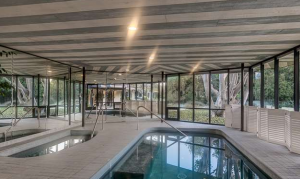 The property also includes an outdoor pool, glass-enclosed indoor pool and spa, along with a rose garden, lawns and a motor court. There is a two-bedroom, two-bath pool house and a 4,000-square-foot production office/guest house.
The property also includes an outdoor pool, glass-enclosed indoor pool and spa, along with a rose garden, lawns and a motor court. There is a two-bedroom, two-bath pool house and a 4,000-square-foot production office/guest house.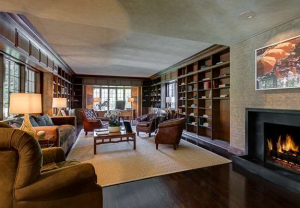


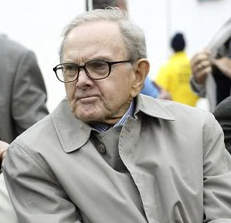
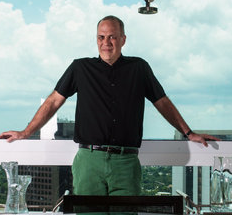
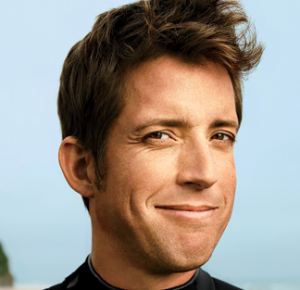
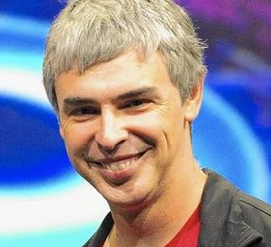 • Another tech billionaire, Google cofounder Larry Page, 41, made the fifth largest donation of the year. Page gave $177 million in stock to a charity he set up in the name of his father.
• Another tech billionaire, Google cofounder Larry Page, 41, made the fifth largest donation of the year. Page gave $177 million in stock to a charity he set up in the name of his father. • Another notable bequest came from media mogul Barry Diller and his fashion designer wife, Diane von Furstenberg. They pledged $130 million to help build a floating park in New York City’s west side.
• Another notable bequest came from media mogul Barry Diller and his fashion designer wife, Diane von Furstenberg. They pledged $130 million to help build a floating park in New York City’s west side.